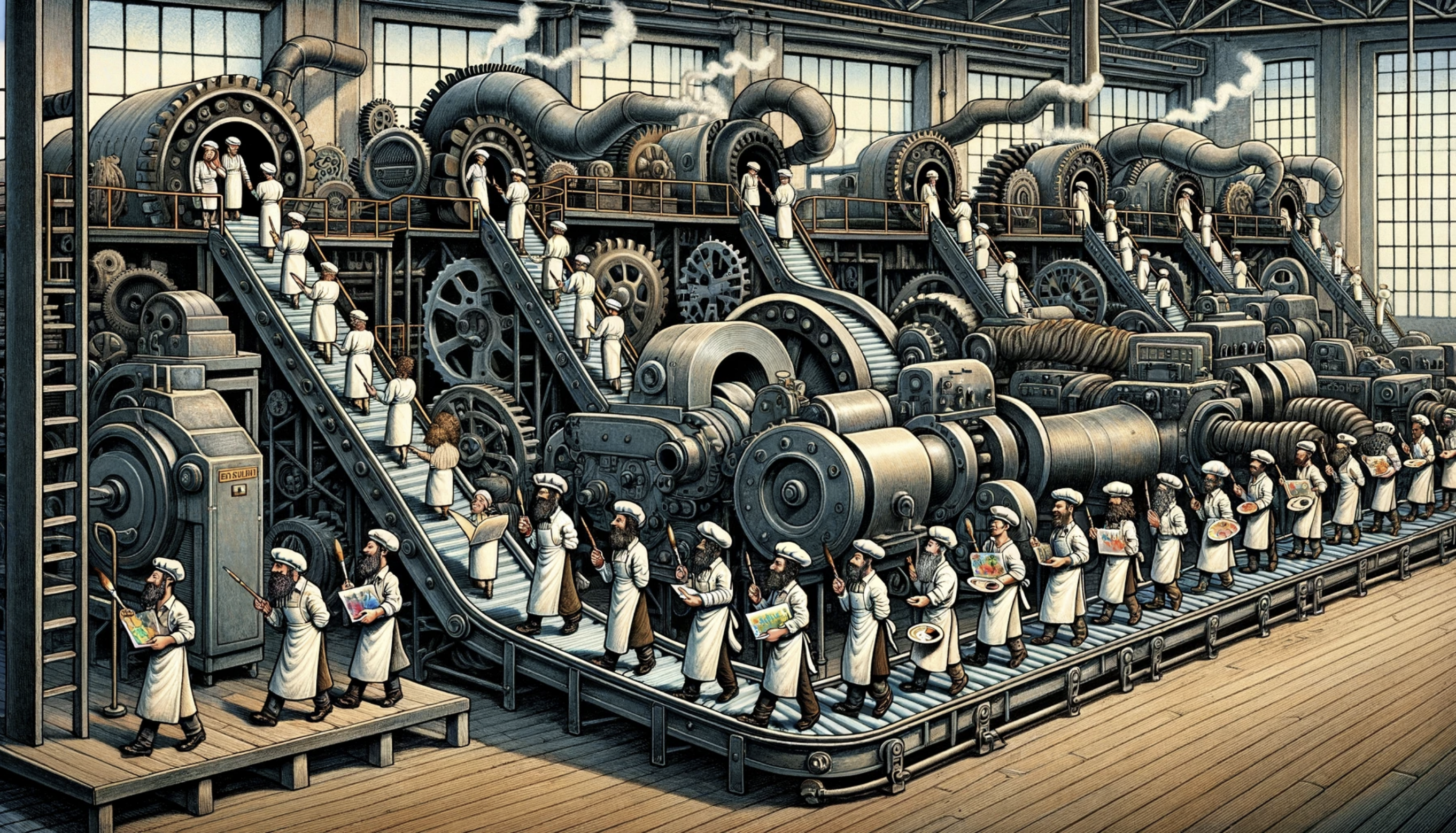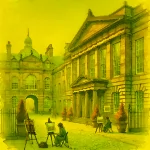
Art schools occupy a unique place in the cultural landscape, acting as both incubators of creativity and potential gatekeepers to the art world. These institutions promise to nurture budding talent and equip students with the skills needed to succeed in a competitive industry. However, the question remains: do art schools foster genuine creativity, or do they perpetuate elitism? Let’s delve deeper into the role of art schools, examining the arguments from both sides and looking at the impact on students and the broader art community.
The Role of Art Schools in the Art World
Art schools have a long history, evolving from medieval guilds to the prestigious institutions we see today. They have always aimed to educate and nurture the next generation of artists. Over the centuries, these schools have become cultural hubs, where tradition meets innovation. Institutions like the Rhode Island School of Design and the Royal College of Art have set high standards in the art education landscape.
These schools are more than just places of learning; they are centers where culture and art are preserved and evolved. Students at these institutions often have access to a wealth of resources, including state-of-the-art facilities and experienced faculty. This environment can be incredibly conducive to artistic growth and experimentation. Furthermore, the reputations of prominent art schools carry significant weight in the art world, often opening doors for their graduates.
However, the influence of these schools can also be seen as a double-edged sword. While they promote high standards and innovation, they can also create a sense of exclusivity. The high cost of tuition and competitive admissions processes often mean that only a select few can attend. This exclusivity can contribute to the perception of art schools as gatekeepers rather than enablers of creativity.
Despite these challenges, art schools continue to play a vital role in the cultural ecosystem. They are breeding grounds for new ideas and serve as important cultural institutions. The ongoing debate about their role—whether as factories of creativity or bastions of elitism—reflects broader societal questions about access to education and the nature of artistic merit. This complex role underscores the need for a nuanced understanding of art schools’ impact on the art world.
Arguments for Art Schools as Factories of Creativity
Art schools provide a structured learning environment that is crucial for developing essential skills and techniques. The curriculum is often designed to cover a broad range of artistic disciplines, ensuring that students receive a comprehensive education. This structured approach allows students to build a strong foundation in their craft. The availability of diverse mediums and technologies further enhances their learning experience.
Mentorship and networking opportunities are another significant advantage of attending art school. Students have access to experienced faculty members who can provide guidance and support. This mentorship can be invaluable, helping students navigate the complexities of the art world. Additionally, art schools often facilitate connections with industry professionals, opening doors to future career opportunities.
Exposure to diverse perspectives is also a critical component of the art school experience. Students from various backgrounds come together, bringing their unique viewpoints and experiences. This diversity fosters an environment of critical thinking and innovation. Interdisciplinary projects and cultural exchange programs further enrich this experience, encouraging students to push the boundaries of their creativity.
Moreover, art schools are equipped with state-of-the-art resources and facilities that are not easily accessible elsewhere. These include well-equipped studios, extensive libraries, and galleries for exhibiting student work. Such resources provide students with the tools they need to experiment and refine their art. The impact of these facilities on student work can be profound, often leading to significant artistic breakthroughs.
Arguments for Art Schools Perpetuating Elitism
One of the primary criticisms of art schools is the high cost of tuition, which can be a significant barrier to entry. Top art schools often have tuition fees beyond the reach of many aspiring artists. This financial barrier means that only those from wealthier backgrounds can afford to attend. As a result, the student body may lack socioeconomic diversity.
The lack of representation from lower-income backgrounds in art schools is a significant concern. This disparity can lead to a homogenized perspective within the institution. When only a select group of people have access to these educational opportunities, it can perpetuate existing inequalities. The art world, therefore, risks losing out on diverse voices and perspectives.
The “elite” label associated with certain art schools can also act as a gatekeeper in the art world. Graduates from these prestigious institutions often find it easier to gain recognition and career opportunities. This creates an uneven playing field where the name of the school can carry more weight than the quality of the work. The art world thus becomes more about connections and prestige than raw talent and creativity.
Furthermore, the notion of meritocracy within art schools is often questioned. Admissions processes can be influenced by networking and privilege rather than purely talent. This undermines the idea that art schools are purely about nurturing creativity. Talented artists who do not have the right connections or financial means may find themselves excluded from these opportunities.
Impact on Creativity and Artistic Development
Art schools can have a dual impact on creativity, both encouraging originality and sometimes fostering conformity. The structured environment can provide a solid foundation, but it can also impose certain artistic norms and expectations. This can lead to a tension between creative freedom and the need to meet academic standards. The balance between these elements is crucial for fostering true artistic innovation.
Personal testimonies from graduates often highlight the mixed experiences of art school. Some students find that the rigorous training and exposure to different artistic traditions help them develop their unique style. Others, however, feel constrained by the institutional expectations and pressure to conform. These varied experiences underscore the complexity of the art school environment.
Alternative paths to creativity also exist outside the traditional art school framework. Many successful artists are self-taught or have pursued non-traditional learning environments. These paths can offer greater freedom and flexibility, allowing artists to explore their creativity without institutional constraints. Prominent self-taught artists often cite their independence as a key factor in their creative success.
Art schools, however, can still be environments for significant experimentation and risk-taking. The availability of resources and support can encourage students to push boundaries and explore new ideas. Innovative projects and artistic breakthroughs often originate within these institutions. This potential for innovation is one of the key arguments in favor of the art school model.
The Financial Realities of Art School Education
The financial burden of art school education is a significant concern for many students and their families. The cost of tuition, coupled with living expenses, can result in substantial debt. For many graduates, the financial return on investment is a critical consideration. While some find lucrative opportunities, others struggle with the economic realities of a career in the arts.
Scholarships and financial aid can mitigate some of these costs, but they are not always sufficient or widely available. These financial supports can make a crucial difference in the accessibility of art education. Successful scholarship programs can help increase diversity within art schools. However, the competition for these resources can be intense.
The career prospects for art school graduates are varied, with some finding significant success and others facing challenges. The creative industries can be highly competitive and unpredictable. Graduates may find themselves in a range of roles, from practicing artists to positions in related fields like design and teaching. Understanding the potential career paths can help prospective students make informed decisions.
Comparing the opportunities for art school graduates with those of self-taught artists reveals an economic divide. Art school alumni may benefit from the networks and prestige associated with their institutions. Self-taught artists often rely on alternative means to gain recognition and success. This divide highlights the complex interplay between formal education and creative achievement.
Case Studies of Notable Art Schools
The recently much-derided Rhode Island School of Design (RISD) has arguably made a significant impact on the American art scene in the past. Known for its rigorous curriculum and emphasis on creativity, RISD produced many notable alumni. These graduates often went on to achieve great success in various artistic fields. The school’s reputation for fostering creativity was considered well-earned by some.
The Royal College of Art (RCA) in the UK is renowned for shaping the future of design. Its emphasis on innovation and interdisciplinary collaboration has led to many groundbreaking projects. The RCA’s influence extends beyond its alumni, impacting the broader design industry. The school’s commitment to pushing creative boundaries is a core part of its mission.
École des Beaux-Arts in France has a long legacy of classical training. This prestigious institution has shaped the careers of many famous artists. Its focus on traditional techniques and artistic mastery remains influential. The school’s contribution to both classical and contemporary art is significant.
Comparing the pedagogical approaches of these schools reveals different balances of tradition and innovation. RISD, RCA, and École des Beaux-Arts each have unique strengths and challenges. These case studies highlight the diversity of art school experiences. Understanding these differences can help prospective students choose the right path for their artistic development.
The Future of Art Education
Digital and online learning are transforming the landscape of art education. Virtual art schools and online courses offer new opportunities for learning. These platforms can make art education more accessible to a wider audience. Prominent online programs are already having a significant impact.
Efforts to increase inclusivity and accessibility in art education are ongoing. Many institutions are implementing programs aimed at diversifying their student bodies. Scholarships, outreach programs, and community partnerships are part of these efforts. Increasing diversity enriches the learning environment for all students.
Art schools are also adapting to industry changes, integrating new technologies and methodologies. Curricula are evolving to include digital art, sustainability, and interdisciplinary collaboration. These changes reflect the shifting demands of the modern art world. Art schools must continue to innovate to stay relevant.
The role of art schools in society involves balancing creativity, commerce, and cultural preservation. These institutions play a crucial part in maintaining cultural heritage while fostering new artistic expressions. Initiatives that connect art schools with broader societal goals are increasingly important. Supporting these efforts ensures that art education remains vital and dynamic.
Conclusion
Globalization has brought both opportunities and challenges to indigenous art forms. While increased visibility and economic benefits are significant, the threats of cultural appropriation and loss of authenticity cannot be ignored. It is essential to find a balance that respects and preserves the cultural integrity of indigenous art while allowing it to thrive in a globalized world. By supporting indigenous artists and advocating for their rights, we can help ensure that these rich cultural traditions continue to inspire and enrich our global heritage.
Art schools occupy a unique and complex position in the art world. They have the potential to be both factories of creativity and bastions of elitism. The balance between these roles depends on the policies and practices of each institution. Supporting accessible and inclusive art education is crucial for nurturing diverse and innovative artistic voices.




